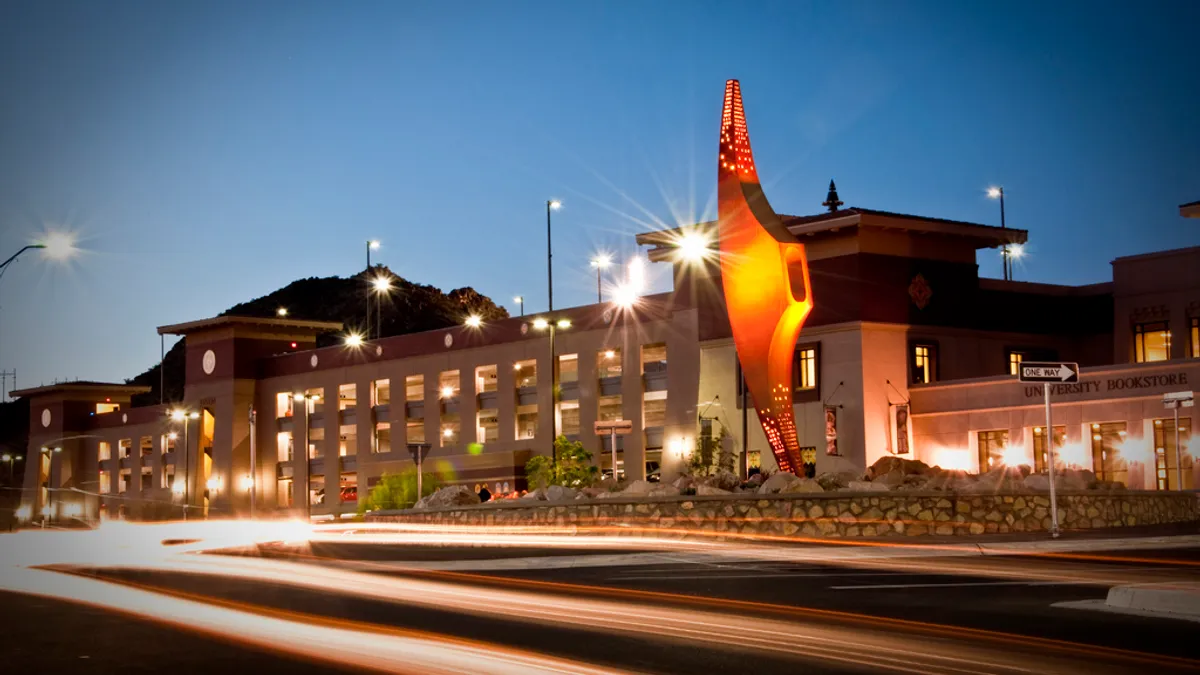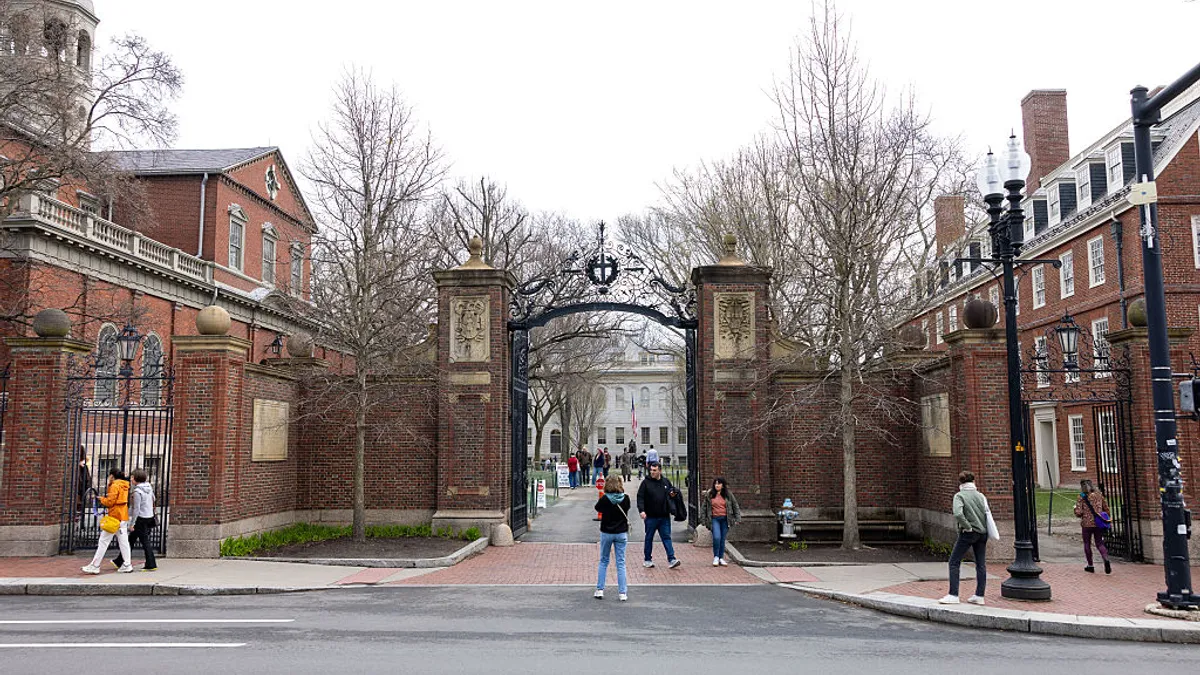Editor's note: This is the third article in a three-part series about the current and future state of student employment on college campuses. Read the first article here and the second article here.
Work-study programs are getting more attention in the hopes they will tackle some of higher education's thorniest problems: Attracting and retaining more low-income students, and addressing the chiding colleges often receive about not preparing students for the world of work.
"This is an important time for work-study," said Reid Setzer, co-author of a 2014 review of the Federal Work-Study (FWS) program that critiques the formula it uses to distribute $1 billion in funds each year, as well as the kinds of jobs it offers students. "The key question is: How can we develop better employment opportunities, and how can we get them to low-income students?"
The answer is proving to be two-part: changing how jobs are structured and the nature of the work itself. To both those ends, colleges are getting creative in offering work experiences that reflect students' academic and career goals and that help set them on a related path after graduation.
Better jobs on campus
At the University of Texas at El Paso (UTEP), students seeking FWS and institutionally funded jobs must develop a resume, apply through a job board and have a formal interview. Once in the role, student workers are reviewed based on written goals and job parameters.
Experiencing the routine elements of a job "increases professional enrichment opportunities for student employees," said Christian Corrales, employer and community relations manager at UTEP. "We want to enhance their student employment experience, plus it helps them develop professional skills in the process."
UTEP is one of several colleges that use hiring, onboarding and management processes that mirror those students will encounter in jobs outside of campus.
At Moraine Valley Community College (MVCC), near Chicago, campus jobs are also run through a central office and have requirements similar to UTEP's. The college even recognizes student workers by naming an employee of the year.
Giving students a sense of the working world has other advantages, said Pamela Payne, director of the Job Resource Center at MVCC.
"Student employment improves [not only] employability skills but also retention and student success," she said, noting that student employees had an average cumulative 3.2 GPA last fall, compared to 2.8 for the rest of the student body. And 92% of those students were still enrolled the following spring, around 20 percentage points higher than for the general student body. (Participating students must be enrolled at least part-time and have a 2.0 GPA.)
The University of Iowa uses its GROW (Guided Reflection on Work) program to tie work-study jobs into learning outcomes by teaching student workers and their supervisors how to talk about those connections. Discussion points include how the job fits a students' academic interests, and whether what they're learning in class applies at work and vice versa.
The program's simple structure has garnered the interest of about 150 campuses since it launched in 2009, and it has been implemented at large public institutions like The Ohio State University and the University of Wisconsin-Madison, along with small private colleges such as Elon University.
Valencia College, in Orlando, Florida, employs students in its student affairs department. There, they work with a range of services, including assisting with new student orientation and implementing health and wellness programming, said Tracey Olsen-Oliver, the college's director of student development.
They also participate in workshops to learn interpersonal and workplace skills, such as how to communicate and collaborate more effectively.
"Employers repeatedly tell us that they want qualified applicants who are adept at soft skills that may not be addressed in the classroom but occur through experience and exposure to varying professional situations," Olsen-Oliver said.
UTEP, too, offers general professional development training for student workers in areas such as communication and emotional intelligence.
"The key question is: How can we develop better employment opportunities, and how can we get them to low-income students?"

Reid Setzer
Co-author, "A Federal Work Study Reform Agenda to Better Serve Low-Income Students"
Education Design Lab (EDL) is helping colleges assess and verify those "soft" skills with a toolkit that enables them to offer badges in areas such as collaboration, oral communication and critical thinking. The colleges must agree to share their frameworks and outcomes data with EDL. Some 600 institutions have signed an agreement to use the badges. Of that group, about 100 are in the process of setting them up and 24 already offer the badges.
In one of its programs, the Washington, D.C.-based nonprofit is working with a dozen historically black colleges to improve students' career pathways. That includes redesigning curriculum, partnering with employers and training faculty to connect coursework to workforce needs.
In a pilot program as part of that initiative, 40 student workers at Oakwood University, in Huntsville, Alabama, will be able to earn the badges through on-campus jobs designed to impart skills relevant for work as peer mentors, library workers, resident assistants and student-athletes. In the latter case, those students' jobs complement their time participating in their sports. About half of the students are expected to come through FWS.
The goal is to prevent students who need to earn money during college from missing out on work experiences connected to their academic and career interests because they are unpaid or because the students lack the connections necessary to secure such positions.
"We see opportunity for Work-Study to be the funding model for internships and apprenticeships that lower-income and underserved students don't get an opportunity to do," said Kathleen deLaski, EDL's founder and president. "They are really cool experiences that wealthier kids have. Lower-income kids mostly work on the frontline of retail, food service or construction. We are committed to working in this space for equity reasons."
Off-campus connections
Change in institution-supported student employment is being considered beyond campus. There, colleges and universities are subject to calls to work more closely with local businesses and nonprofits to provide students with internships, apprenticeships and other experiential learning opportunities.
However, the FWS program limits how much institutions can subsidize off-campus jobs. And as a result, some critics say, colleges don't have an incentive to build those relationships.
That could change pending the outcome of a new pilot from the U.S. Department of Education that expands how institutions can use FWS funding for off-campus employment.
A structured way to connect employers with student workers is also needed, Setzer said.
One idea comes from Chicago-based education technology firm Parker Dewey. Its online platform features a directory of short-term micro-internships that give students between five and 40 hours of paid experience in work such as content creation, candidate sourcing, market research and lead generation.
"It is a win-win in several ways," said Jeffrey Moss, Parker Dewey's founder and CEO. "Companies test out a student interested in their firm and fill a need for handling a short-term project." For colleges and universities, it promises better job placement and stronger employer relationships.
"Lower-income kids mostly work on the frontline of retail, food service or construction. We are committed to working in this space for equity reasons."

Kathleen deLaski
Founder and president, Education Design Lab
Apprenticeships, too, are a growing area of focus. They got another jolt of interest earlier this year with a call to action in the Trump administration's 2020 budget proposal.
Harper College, located in Palatine, Illinois, has put 158 students in apprenticeships since it began a program focusing on them in 2015. The apprenticeships, most of which run two or three years, are offered in eight fields, including banking and finance, cybersecurity and supply chain management.
So far, 49 students have graduated, and 116 were enrolled in the 2018-19 academic year. The roughly 50 employers who have worked with the program pay the apprentice and provide a mentor while the college offers courses, awards an associate degree and provides pathways to a four-year diploma.
"Given a shift in student priorities and workforce needs," said Alexa Wesley, a research and policy associate at NASPA, which has put forward its own recommendations for student campus jobs, "now is a good time to shine a light on ways that paid campus employment can serve as a vehicle for administering activities known to help students persist, develop meaningful connections, and build career-readiness skills."





















